New High-Speed Information and Communication Technologies Will Affect Our Lives and Businesses in 2021
In the year ahead, we’ll see AI, IoT and IIoT technologies, cloud computing, 5G communications, blockchain, UAVs, and robotics impact nearly every market. These transformative technologies are becoming more pervasive and more proficient.
As we move into 2021, multiple breakthrough technologies are being implemented that will affect our daily lives and shape technological progress for the rest of the decade. AI, the Internet of things (IoT), the Industrial Internet of Things (IIoT), Industry 4.0, cloud computing, 5G communications, blockchain, UAVs, and robotics are among the electronic and mechanical advances that will reshape our world. Many of these technologies are about to come into full implementation and utility, and many will be interdependent, such as UAVs and robotics, or 5G and the IoT.
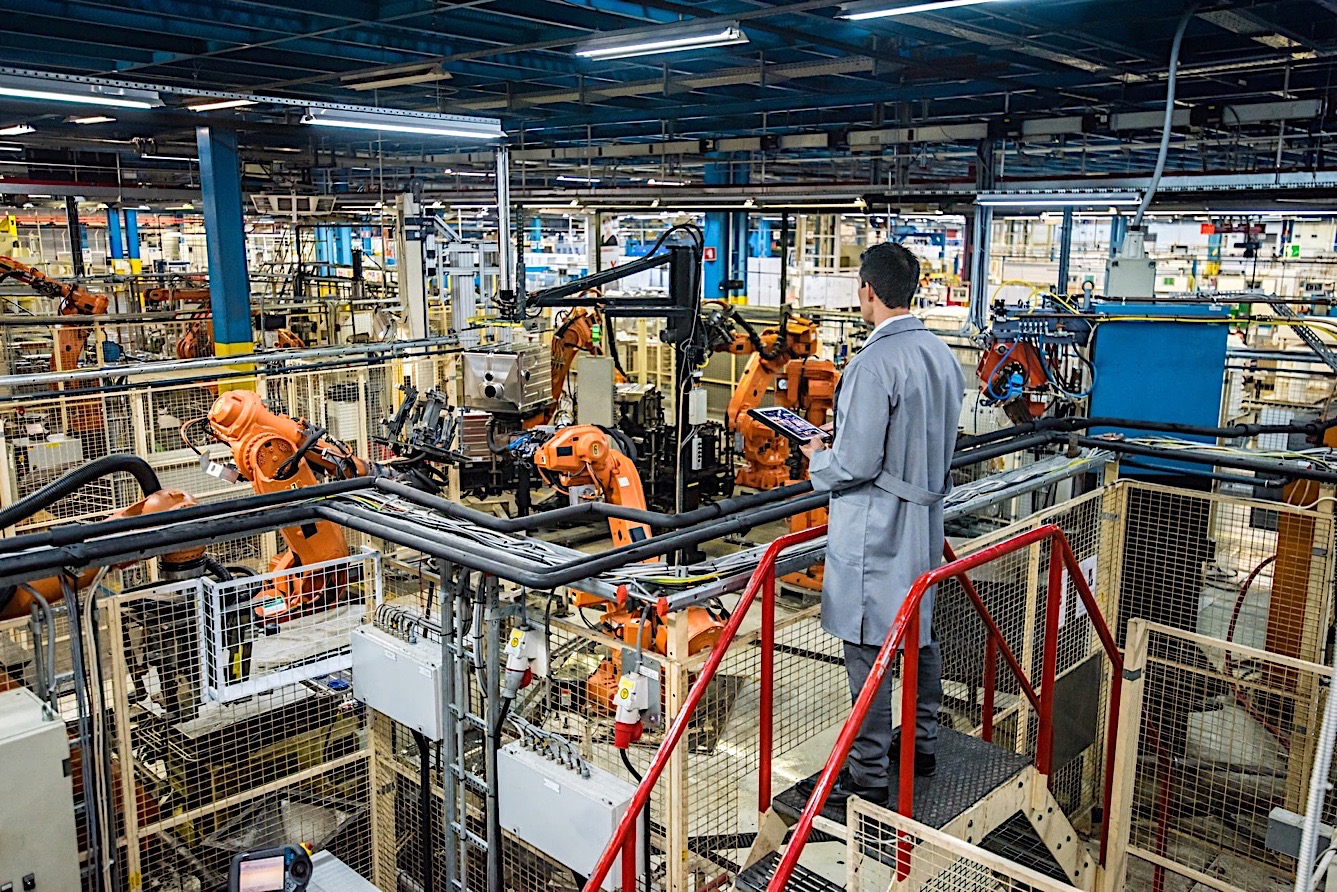
Tomorrow’s factory will operate with the expanded use of robotics, 5G-enabled sensors, and blockchain-controlled operations. (Photo courtesy of Mouser Electronics)
Many of these upcoming advances are contributing to efforts to resolve the COVID-19 pandemic. Machine learning and computational analysis — the basics of AI computing with cloud support — have been used to analyze millions of protein combinations to develop vaccines for the SARS-CoV-2 virus. Prior vaccines took a minimum of four years of development before being released, but new technologies have brought about potential solutions slated for release in early 2021.
Robotics, Wearables, and Prosthetics Have Common Technology
We often think of robots as tools used for repetitive industrial tasks or domestic chores, such as welders in automotive assembly lines and Roombas. Machine-to-Machine (M2M) infrastructure is set to greatly expand as 5G comes into full implementation and delivers the high speeds needed to reduce latency problems to under 10 milliseconds between machine sensors to optimize automated production.
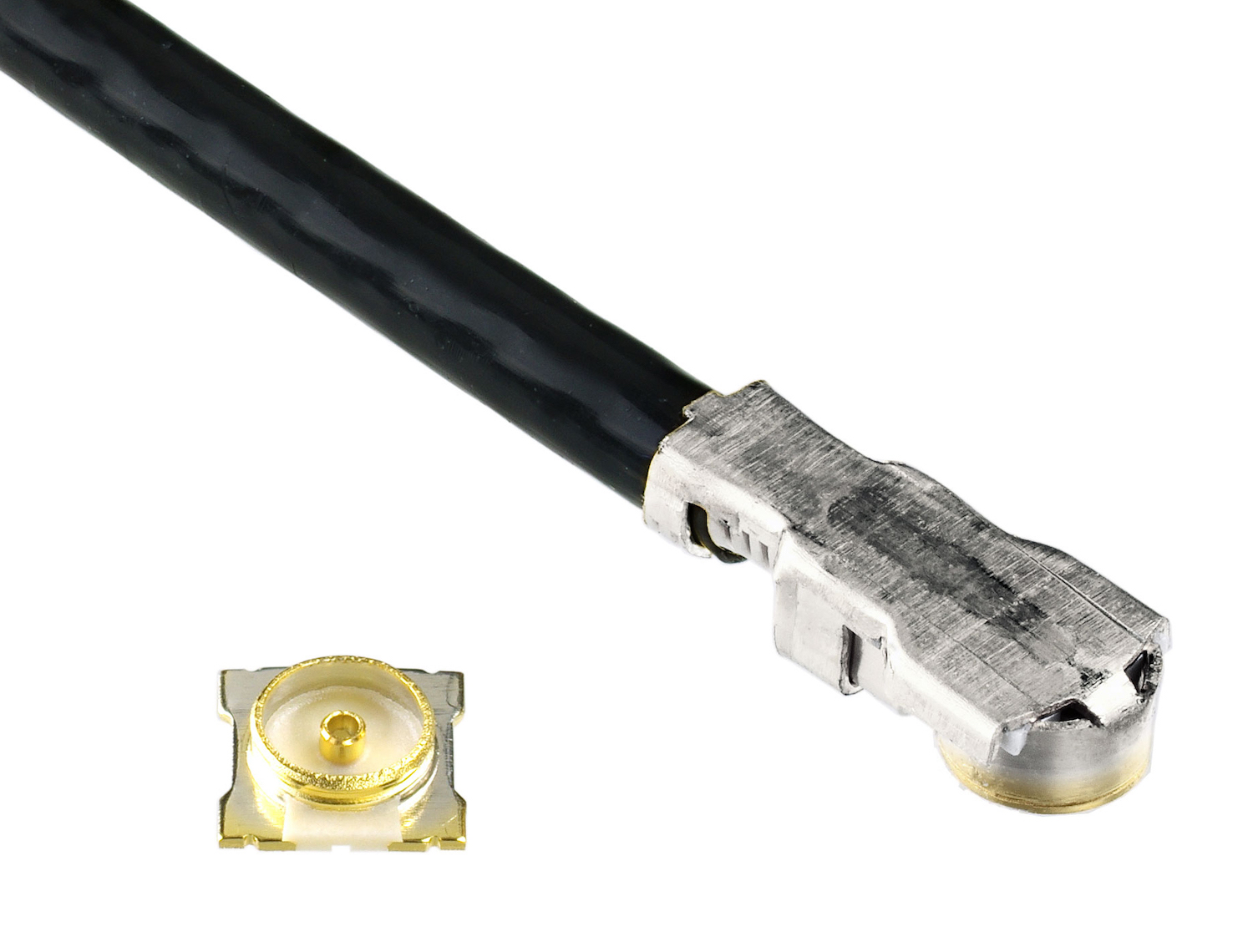
I-PEX’s MHF 7S Micro RF Coaxial Connector is ideal for use in mmWave devices utilizing intermediate frequencies up to 15GHz, including small cell towers now being installed in 5G infrastructure.
5G and AI will enable the development of new smart devices and services. For example, Diligent Robotics Inc. makes nurse assistant humanoid robots to help medical staff. They manage menial tasks, freeing up healthcare professionals for more important tasks, while using guidance learning to develop more efficient interactions with hospital and human-staff variables. The components that make these robots possible will evolve as well. Medical connectors will still have to meet ISO and IEC standards, but localized mobile broadband capabilities will replace some wiring with increased RF interconnections. Just coming online now, new total-hospital HIPAA-secure patient monitoring networks will help optimize treatment, staff support, and post-release, remote follow-up.
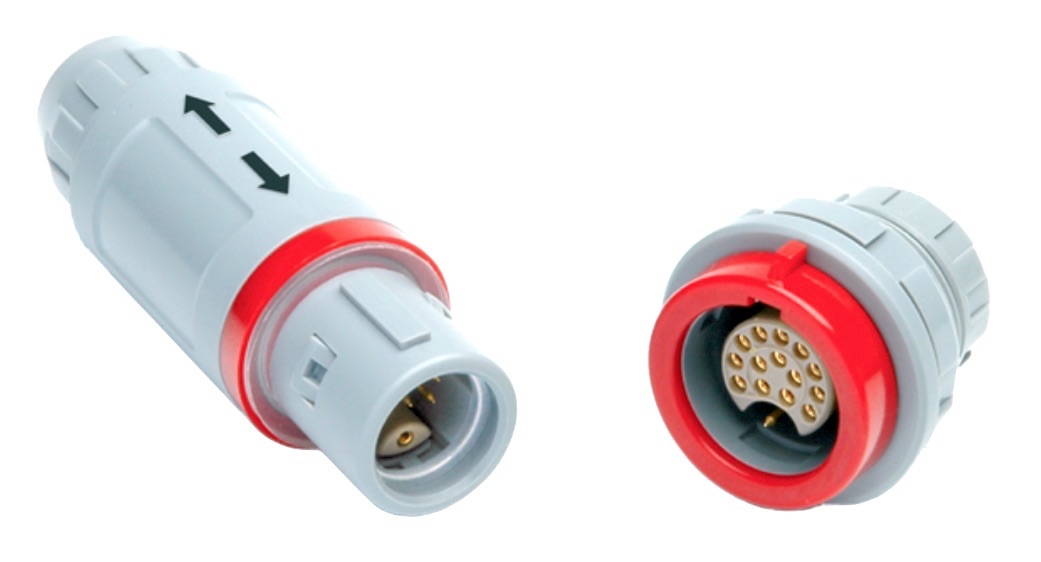
LEMO’s REDEL P connectors are well-suited to medical robotic applications. They offer IP68 water tightness and full EMC to provide high-reliability performance in harsh medical operating environments where multiple equipment technologies are in use.
An experimental micro-satellite involving AI launched into orbit in late 2020, with Intel’s AI Movidius Myriad 2 Vision Processing Unit (VPU) aboard. The Myriad 2 is analyzing the vast amount of sensor-generated data while in orbit, instead of waiting to transmit to Earth for recording and analysis months later. If successful, this will open up a whole new approach to obtain real-time results from satellites.
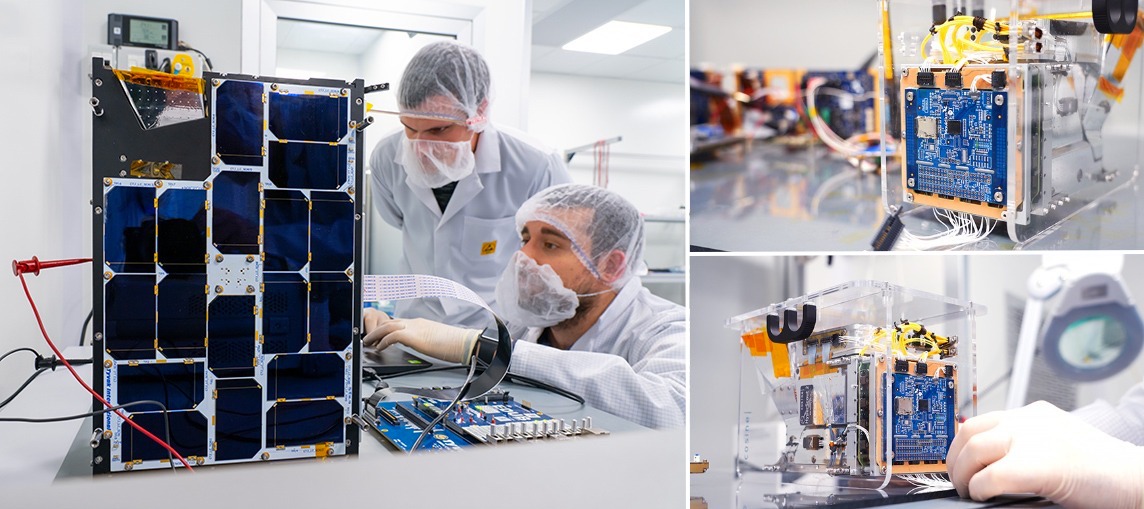
The PhiSat-1 micro-satellite (left), about the size of a large cereal box, is soaring at 17,000mph about 329 miles over the Earth. It features a new hyperspectral thermal camera and onboard AI processing, thanks to an Intel Movidius Myriad 2 VPU (right). The AI processor handles all the data and only downloads specific results. (Images courtesy of Intel.)
One of the problems with all the communications and sensor transmissions of 5G, autonomous vehicles, peer-to-peer (P2P), pedestrian-to-everything (P2X), new test equipment, and instrumentation, etc., is that assemblies involve more sensitive circuits and smaller packaging, resulting in electromagnetic interference (EMI) problems. Most EMI incidents involve spurious emissions, such as RF interference (RFI), electrostatic discharge (ESD), or power disturbances. ESD is an especially difficult problem due to its potential to cause permanent damage.
Wearable technology will have the speed and bandwidth needed to seamlessly affect users’ lives in many ways, including augmented reality to support distance learning and the coordination of team activities, such as military ground maneuvers or social distancing protocols. Consider over-the-air (OTA) tracking of P2P or P2X location, with future remote context and activity recognition (e.g., falling) from sensor data for our senior citizens, transmitting via closely spaced 5G small cell sites. The U.S. Army Futures Command is developing a formal request for proposals (RFP) for inputs during 2021 for a practical military exoskeleton. Announcing the project, Rich Cofer, the Army’s lead capabilities developer, said, “We are not going after the Starship Troopers/Iron Man system right off the bat,” and that, “Expectation management is key.”
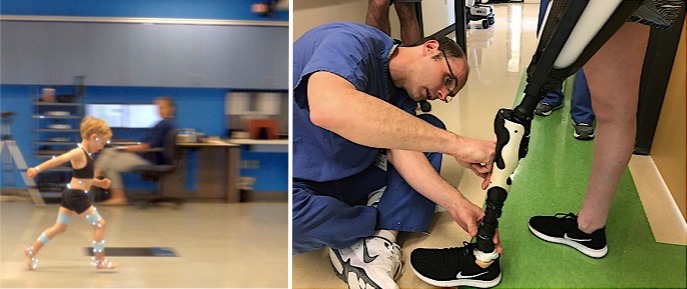
Mobility function recording at Shriner’s Motion Analysis Center (left). An orthopedic specialist at Shriners Hospitals for Children installs a new microprocessor-controlled assembly (right). This video details the patient’s first time using her prosthesis.
The same next-generation of microprocessor sensors for external wearables is being introduced for use in prosthetics. Inputs from several Shriners Hospitals for Children patients lets us see how prosthetics designers help patients upgrade from, say, a traditional mechanical knee to a new microprocessor-controlled knee. In this new sensor-enabled prosthetic technology, microprocessors sense patient activity 1,000 times per second to accurately provide varying amounts of resistance. Patients’ prosthetics-supported mobility functions are recorded in the Shriner’s Motion Analysis Center, utilizing 12 Vicon infrared cameras and an array of wearable reflective markers to record movements, and software makes this process child-friendly by transforming motion analysis patients into virtual reality (VR) video game characters of their choice, live and onscreen, while also generating cloud-stored 3-D images for medical study. The data is then reviewed in a virtual multi-departmental conference to identify any necessary changes to patients’ prosthetic devices and, within a matter of hours, revised programming is sent to the hospital’s in-house 3D additive printing equipment, which produces new parts for a final fitting the next day.
Much of the human-motion technology used in computer-generated movie scenes and many robotic developments, including powered exoskeletons for both military and commercial use, stems from decades of research by Shriners Hospitals for Children involving cerebral palsy, childhood sports injuries, and movement-affected birth defects.
The Use of Unmanned Vehicles Will Expand
Unmanned aerial and ground vehicles (UAVs and UGVs) are becoming common in numerous markets, including delivery trials by Walmart and Walgreen’s, Intel’s coordinated flying sports events, and down-the-street viewing tools used by soldiers and real estate agents. In 2021, we’ll see Assured Autonomy integrated into innovative vehicles that will require greater security against misuse. Due to the reduced project and unit costs, and the increased probabilities of mission success, UAVs increasingly will be used in swarms, where a set of intelligent aerial vehicles coordinate for a specific goal, based upon advanced algorithms (e.g., AI) and secure vehicle-to-vehicle (V2V) communications, often with one to many vehicle-to-everything (V2X) transmission requirements.
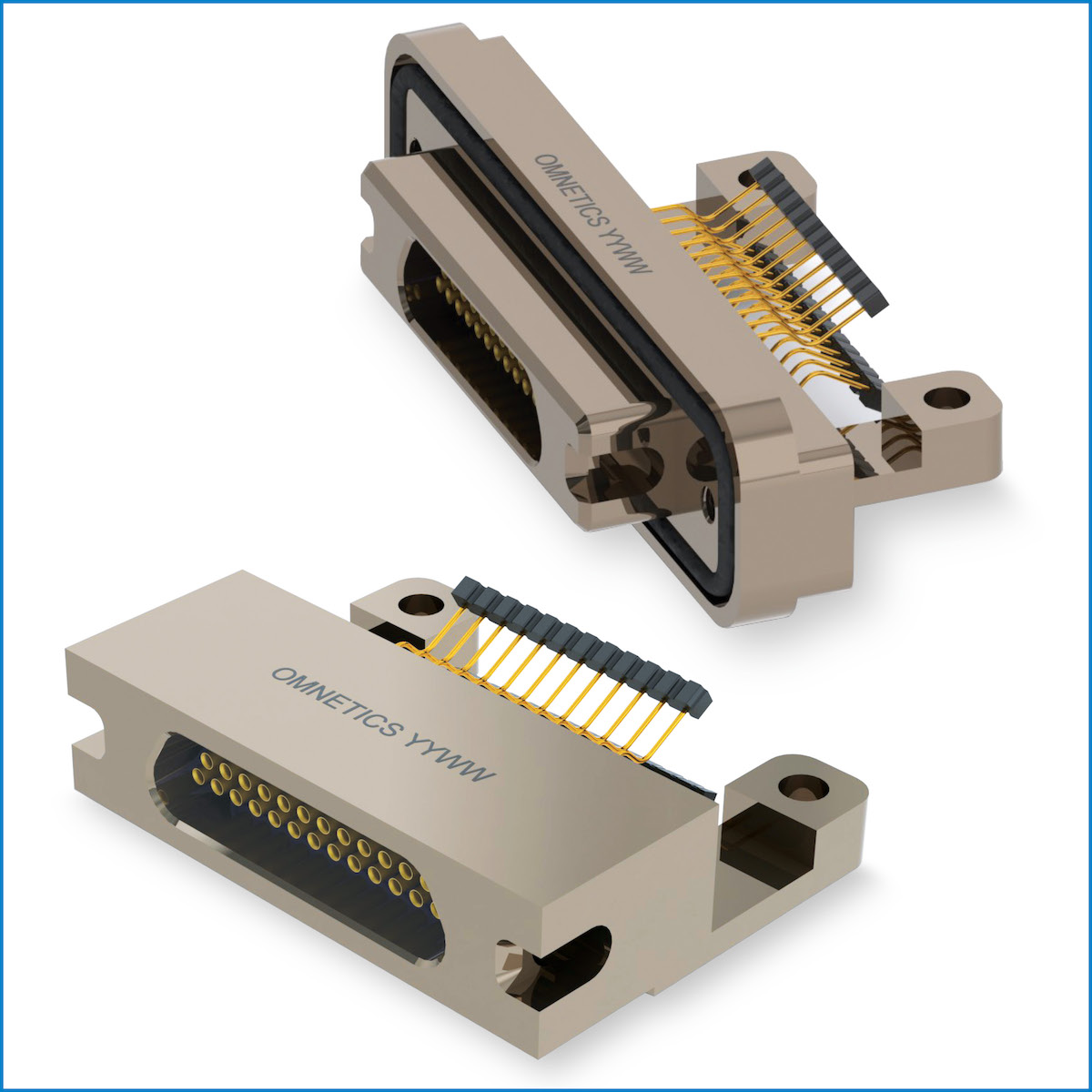
Omnetics Connector Corporation’s Latching Micro-D Connectors are small, lightweight, and secure, and help minimize payload in tiny aircraft such as UAVs.
2021 will be a major year for new all-electric vehicles, including GMC’s HUMMERev truck, Audi’s Q4 e-tron, BMW’s i4, Tesla’s Cybertruck, Ford’s electric F-150, a futuristic Aspark Owl hypercar by Aspark co., Ltd., Rivian’s off-road trucks (with investment funding by Ford and Amazon), and vehicles by Lucid Motors (founded by Peter Raulinson, past chief engineer at Tesla Motors, with Saudi Arabian funding). These vehicles all feature high-power circuits that require unique high-voltage connectors.
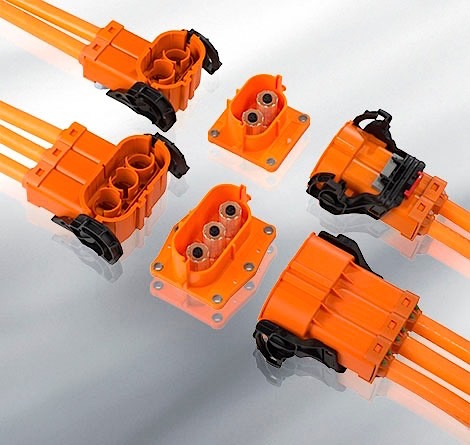
TE Connectivity’s AMP+ HVP 800 high-voltage connectors transport high power and voltages throughout electric and hybrid electric vehicles systems. The touch-proof two- or three-position connectors and headers feature integrated internal high-voltage interval loop (HVIL) function and EMI shielding.
Blockchain Technology Will Control More than Bitcoin Valuation
Blockchain technology is expected to see widespread use in 2021. In this technology, multi-shared records (blocks) are linked using cryptography. Each digital block includes a cryptographic hash function (CHF) of the prior input plus a trusted timestamp and the new transaction itself. (A CHF is also called a hash message.) Once recorded, the data in any given block cannot be altered without altering all subsequent blocks, which requires the consensus of all networked parties. While cryptographic hash functions are tools of modern code writing, their major future benefit will be to support expanded Blockchain use throughout industry.

New 2.2-5 Series small, low–PIM RF connectors are ideal for space constrained applications such as 5G cell stations. These robust connectors feature a high level of protection and are optimized for half-inch semiflex cables. IEC standardization (IEC 61169-66 ED1) is in progress, but 2.2-5 connectors are already available from Amphenol RF, Molex, CommScope, and other companies.
Blockchain is a shared, multiple-location, unalterable ledger used to document and define processes. It can be used to record any transaction and track the movement of any asset, whether tangible, intangible, or digital. It can help companies manage the flow of goods, make payments, or share production status between suppliers and manufacturers to optimize just-in-time assembly. It is also used to record every Bitcoin transaction ever made.

Amphenol ICC’s QSFP cable assemblies are used in networking systems in patch panels, switches, and host card adaptors, and servers. They enable high-speed computing processes behind blockchain technologies.
Other cryptocurrencies have been built on a decentralized P2P network, such as Ethereum (ETH), Ripple (XRP), and Litecoin (LTC), but Bitcoin dominates the market. A new currency called Digital Currency Electronic Payment (DCEP), was created by the Chinese government to become a digital version of China’s official currency, the Yuan. If the Chinese government mandates the use of DCEP, it could become a dominant global cryptographic currency in time. But one concern for Chinese transactions using DCEP is whether their servers would contain the IP involved with international supply chain processes and product designs. What will be the price of your connector or cable assembly in Chinese DCEP? We’ll find out more in the decade ahead.
Like this article? Check out our other Innovation, AI, 5G, Wearables, and Robotics articles, our Datacom/Telecom and Industrial Market Pages, and our 2020 and 2019 Article Archives.
- New Circular Connectors Add to Multi-Billion Dollar Market - January 9, 2024
- Counterfeit Components Ground Airlines - December 12, 2023
- Cables, Connectors, Waveguides, and Hybrid Products for up to THz at IMS 2023 - July 11, 2023





